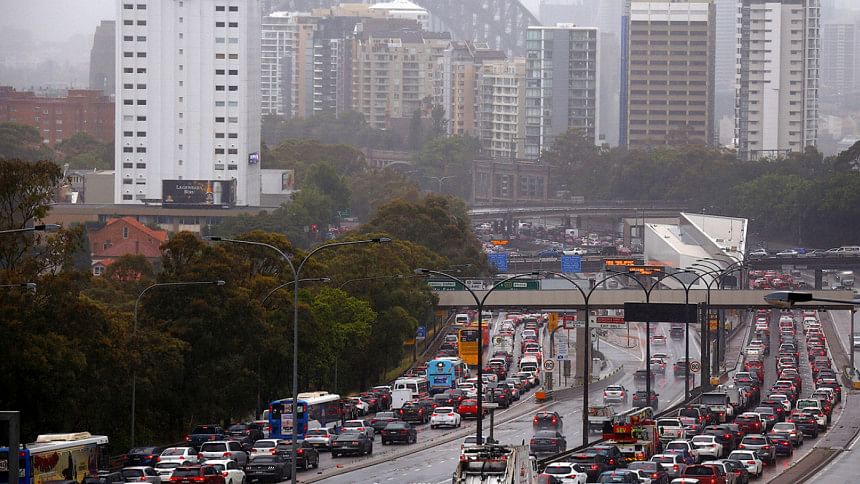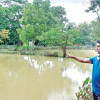Australia's wild weather floods Sydney

Torrential rain and gale force winds lashed Australia's biggest city Sydney today causing commuter chaos, flooding streets, railway stations and homes, grounding flights and leaving hundreds of people without electricity.
Police called on Sydney motorists to stay off the roads due to the "horrendous weather". One person was killed in a car crash during the storm and two police officers seriously injured when a tree fell on them as they assisted a stranded motorist.
Australia's Bureau of Meteorology (BOM) said within just a few hours Sydney received more than 100mm of rain, a level that the country's most populous city would normally receive throughout the whole of November.
Although the rains offered a welcomed respite to farmers who have suffered through a sustained drought in recent months, the weather caused major disruptions to Sydney's infrastructure.
Sydney Airport, the country's busiest, said it cancelled at least 20 flights after closing two of its three runways, while the majority of flights that continued suffered delays.
"The storm is pretty intense in and around the airport," Cait Kyann, a spokeswoman from Sydney Airport, told Reuters.
"We are operating from a single runway so that means that there are delays and likely some flights will be cancelled."
Ausgrid, the nation's biggest electricity network, said the storm had left 8,100 customers without power around Sydney and the Central Coast area to its north.
There was chaos on Sydney's roads as the storm struck only hours before the city's main morning peak hour, transforming some streets in fast flowing rivers and parks into lakes. Several stranded motorists were plucked from rising floodwaters.
"We are asking all road users to reconsider the need to be on the roads throughout what will be a severe rain event today," said New South Wales state Assistant Police Commissioner Corboy.
The BOM said the storms would last through most of the day before easing, with gale force winds whipping up four metre (12 feet) waves which are expected to pound Sydney's beaches.
In stark contrast in Australia's northern state of Queensland soaring temperatures near 40 degrees Celsius (104 Fahrenheit) and strong winds exacerbated major bushfires.
Firefighters have been battling for nearly a week to contain more than 80 fires across Queensland.
"We are expecting a very bad day," Craig Crawford, fire and emergency services minister for the Queensland state government told Australian Broadcasting Corp radio.
"These are the kind of days where people could lose their lives."

 For all latest news, follow The Daily Star's Google News channel.
For all latest news, follow The Daily Star's Google News channel. 








Comments